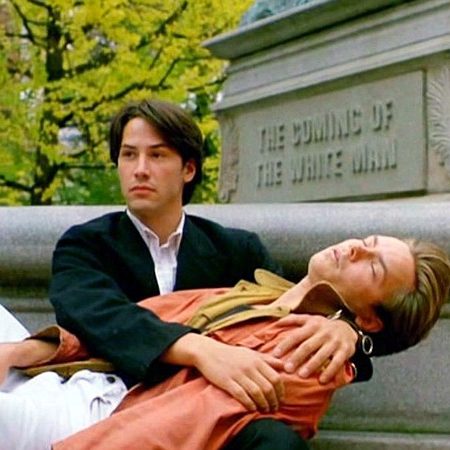
Like a good single, a terrible one reveals itself with airplay and forbearance. I don’t want to hate songs; to do so would shake ever-sensitive follicles, and styling gel is expensive. I promise my readers that my list will when possible eschew obvious selections. Songs beloved by colleagues and songs to which I’m supposed to genuflect will get my full hurricane-force winds, but it doesn’t mean that I won’t take shots at a jukebox hero overplayed when I was at a college bar drinking a cranberry vodka in a plastic thimble-sized cup.
Lionel Richie – “Dancing on the Ceiling”
PEAK CHART POSITION: #2 in August 1986
Because Lionel Richie has never been a person whose career suggested he danced at discos or the bathroom, let alone ceilings, his last top five pop smash has the pull of good fiction. The former Commodore had had an excellent early eighties: productions and songwriting assists for Alabama and Diana Ross; a smash eponymous debut; and the onslaught of 1983’s Can’t Slow Down, an eventual Grammy winner for Album of the Year that exploited MTV’s insatiable appetite for product and radio’s acquiescence to this new order. With a gate fold sleeve flaunting Richie’s sartorial entry into the world of pop high finance, Can’t Slow Down might’ve been Thriller if Thriller hadn’t been Thriller; “All Night Long (All Night)” was scary-ebullient as much as “Thriller” was, and the synthesizers on both didn’t scare Jeff Porcaro and Steve Lukather. Like Thriller, its handful of non-single tracks (“The Only One” and the title track) got enough airplay to fool listeners into thinking they were.
After the Grammys, Lionel hung up the sequined “Outrageous” jacket and crawled into the studio again, his job like it’s the landscaper’s to sod my condo hedges and Nicole Wallace’s to be a reasonable conservative. “Say You, Say Me” was the result of research into how the English language works. This single is the kind of hit that, like Ronald Reagan and Donald Trump, upsets every parameter of common sense, beauty, and effectiveness. It ruled four weeks in December 1985 and January 1986, preceded by Mr. Mister’s “Broken Wings” in a particularly harrowing winter when the emptily pretty ruled but couldn’t melt snow in Connecticut or dissolve heat in Ft. Lauderdale.
A chiming sequencer and boogie piano herald crowd noise for that canned excitement. A broken Buffalo Springfield quote reminds listeners that in the High Eighties of 1986 the revolution would be commodified. Bryan Ferry’s period solo records got flak for the singer’s detachment, but a casual listening to “Dancing with the Ceiling” would show that Richie is the least committed of revelers. “Let’s dance!” he shouts from the bedroom with a glass of port while the guests in the other room play Parcheesi like Rick Moranis’ Louis hoped they would at his own party in Ghostbusters. The bass is slapped, the taped crowd noise gets as loud as a campaign rally, the Sociables get bean dip smeared on them. Tom bo li de say de moi ya, yeah, jambo jumbo! Meanwhile, one floor down, Wang Chung were ordering everyone by knife point to have fun tonight. And downtown Jermaine Stewart reassured guests that they didn’t have to take their clothes off, even with a bellyful of cherry wine.
Certain recordings issued in the 1985-1986 era necessitated the writing of the New Jersey Rule, two years before the release of the album that coined the phenomenon. Consider: Tina Turner’s Break Every Rule, Cyndi Lauper’s True Colors, Huey Lewis and the News’ Fore!Each one of these de luxe, high-profile releases followed a surprise multi-platinum phenomenon that well into 1986 sold in the millions. These follow-ups were guaranteed instant platinum. Yet every one disappointed commercially or, in the case of Fore!, which produced more hits than 1983’s Sports, left a sour taste. Released at the height of summer ahead of the fourth quarter crush, Dancing on the Ceiling got to #1 faster than Can’t Slow Down: the first album in history that the RIAA simultaneously certified silver, gold, platinum, and double platinum, whoa nelly. “Love Will Conquer All” and the awful “Ballerina Girl” followed “Dancing…” into the top ten. “Se La,” the most expensive reggae-tinged hit to ever brush the top forty, faded in the top twenty, Richie’s first. The superior Alabama collaboration “Deep River Woman” didn’t even cross over pop but, gratifyingly for The Man for All Genres, went top ten country.
Not to worry, though. Richie may have retired for a decade to count the money he was going to shell out for his divorce, but in 2012 his uncanny ear for the big payday suddenly heard a tuning fork: re-recording his classics with a galaxy of country stars for Tuskegee brought him unexpected platinum from the Target market that also bought Blake Shelton CDs. Little Big Town dusted off “Deep River Woman.” Big & Rich did “Dancing on the Ceiling” — just kidding! If there’s one-act that would’ve known how to dance — on ceilings or otherwise — it would’ve been the electric cowpunk duo (Rascal Flatts did, in case readers wondered). The rest was staid and safe. Why couldn’t Miranda Lambert sex up “Running with the Night”? Why couldn’t Shania Twain in Up! mode have done “You Are” and added an exclamation point? Answer: Lionel was in charge of this party, and just like in 1986 he was mixing the Cosmos.
